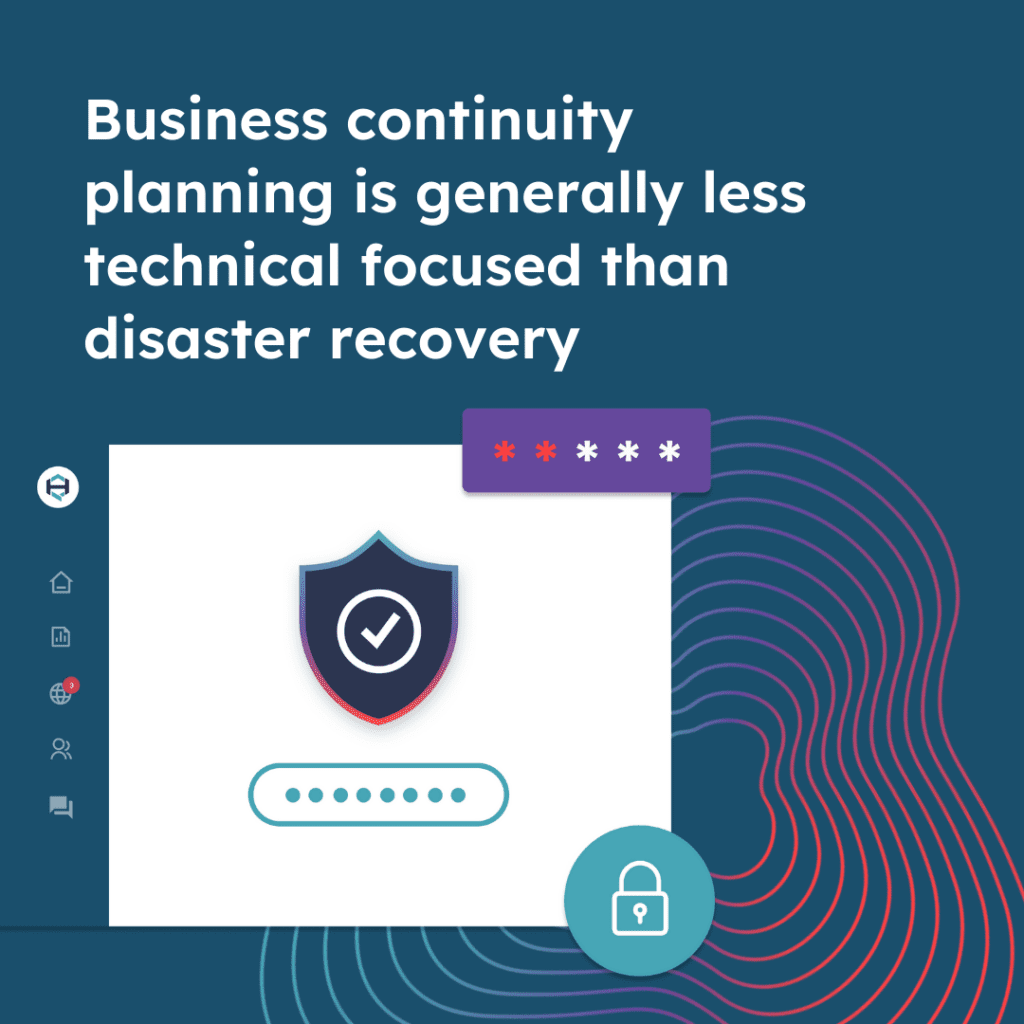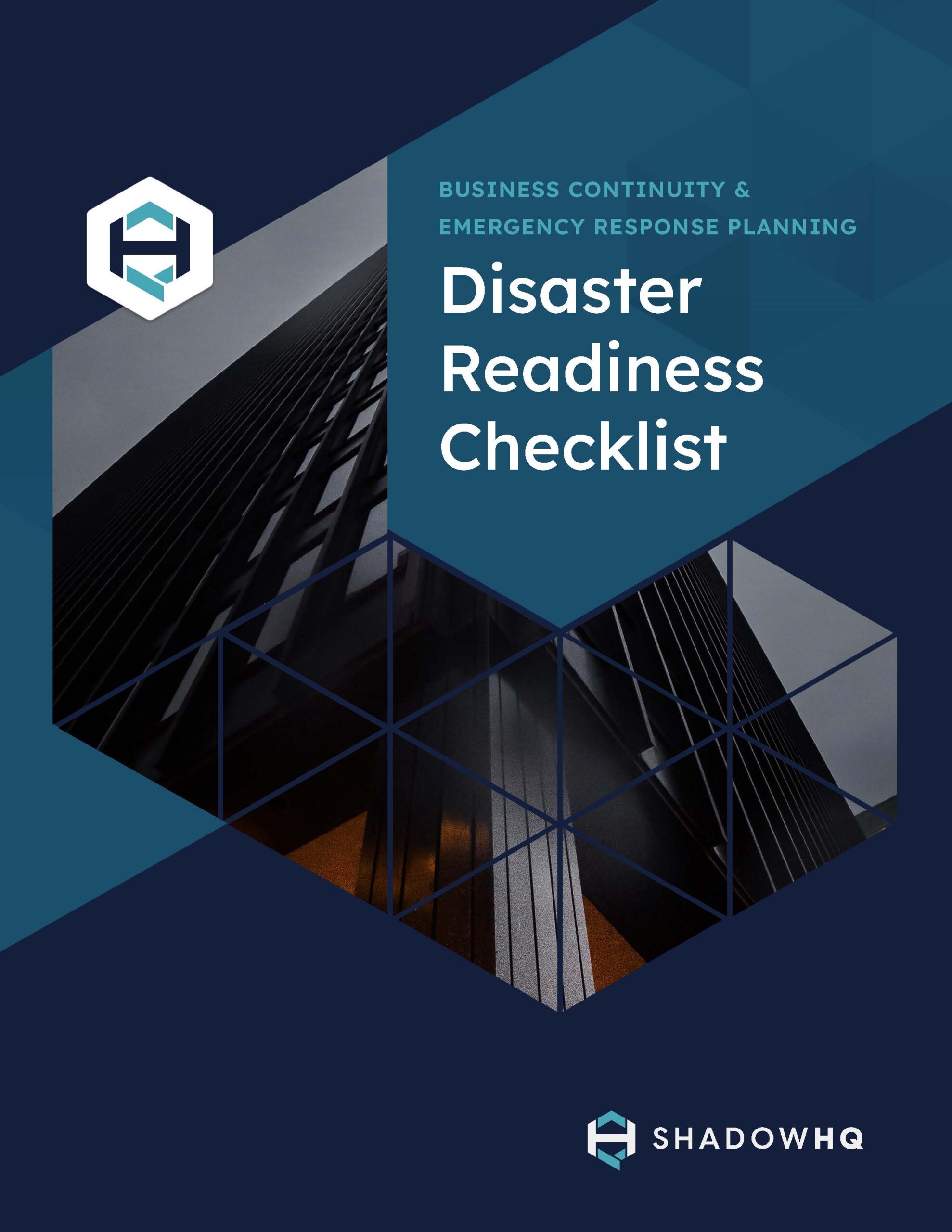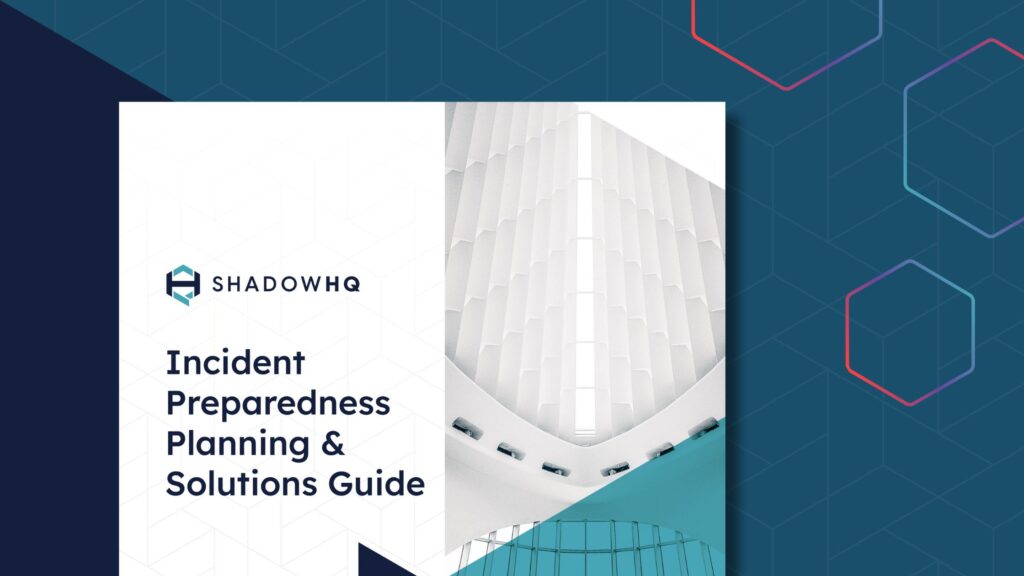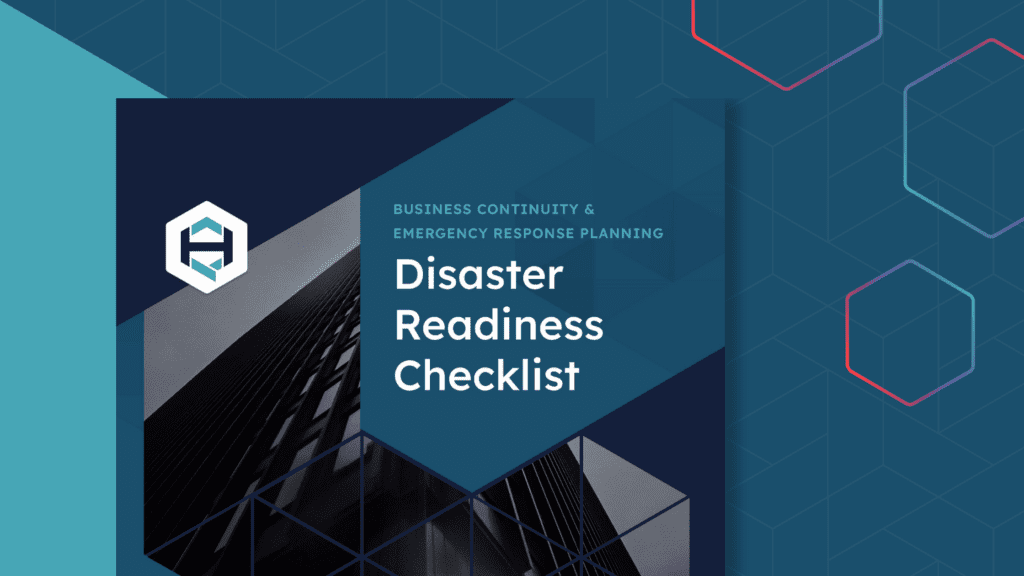Best Practices for Business Recovery Plan and Disaster Continuity
Keeping your business operational is exceedingly challenging in the face of evolving threats and global uncertainty. Planning is critical to remaining operational, keeping customers happy, and generating revenue.
Business recovery is a multi-stage process that follows an incident or crisis. It involves the creation of a business recovery plan designed to minimize losses and ensure a swift return to operations.
Business Continuity Plans (BCP) and Disaster Recovery Plans (DRP) focus on critical IT systems and overall business operations that will bring your business to a standstill if they go down. From there, you create strategies to keep those systems and processes operational and minimize disruptions.
BCPs and DRPs rely on following effective best practices to achieve their goals. When done correctly, you’ll keep your business operational or be prepared to return it to normal operations as quickly as possible.
So, keep reading to learn the best practices behind these two related yet separate components of avoiding or minimizing disruptions.
Understanding Business Continuity and Disaster Recovery
Business continuity and disaster recovery are so intertwined that they’ve become mutually exclusive — BC/DR planning.
BCPs and DRPs are foundational components of an overall resilience strategy to ensure critical capabilities remain operational or recover from disruption. While similar, these terms take different approaches to ensuring your ability to operate:
-
BCPs take a holistic view of the entire business and its critical components, striving to keep them operational during a crisis or rapidly recover. A BCP is still concerned with IT systems but evaluates strategies based on the entire business.
-
DRP plans help you recover from a crisis, such as a fire or cyber attack. Additionally, disaster recovery plans are often more detailed and focus on the technical aspects of restoring IT systems to normal functionality.

An incident response plan (IRP) in conjunction with a disaster recovery plan (DRP) is essential for a comprehensive data protection strategy. The IRP focuses on minimizing the immediate negative effects of unexpected incidents and facilitating a swift return to normal operations.
We’ll tackle each component’s best practices separately, so you’re ready to enhance your resilience based on your business needs.
Best Practices for Business Continuity Plan
Business continuity planning is generally less technical focused than disaster recovery. Instead, it looks at the entire business and the essential elements to remain operational. Then, prevention and recovery strategies are developed to be ready to help when needed.
Assembling a business continuity team dedicated to developing and implementing a Business Continuity Plan (BCP) is crucial. This team should consist of members from different departments who possess a thorough understanding of the organization’s operations.
Let’s explore the top best practices to make your business more resilient.
Conduct a Risk Assessment and Business Impact Analysis (BIA)
Risk assessments aim to identify possible weaknesses and vulnerabilities. A BIA follows risk assessments and explores the possible results of a disruption to your to help develop recovery strategies. The goal is to understand a vulnerability’s financial, compliance, or legal results and prioritize mitigation and recovery strategies.
You don’t need to start from scratch; reinventing the wheel is unwise. Instead, you can benefit from frameworks and guidance from the experts.
The U.S. Department of Homeland Security offers business readiness preparedness advice for conducting risk assessments followed by a Business Impact Analysis (BIA). The DHS provides guidance to help you conduct a risk assessment, including natural disasters, human-caused, and technical incidents.
You can also explore other risk assessment frameworks, like NIST’s guide for conducting risk assessments. Explore different options to lay the groundwork for evaluating risks and their potential impact.
Develop Strategies for Critical Threats
After you’ve conducted a risk assessment, evaluated potential business impacts, and identified critical processes — it’s time to strategize so your teams are ready for the future.
Every identified critical threat should have a corresponding mitigation and response plan. Don’t worry about every possible scenario facing your business, but those that disrupt continuity. A few best practices for strategizing are:
-
Create overarching processes focusing on continuity, returning your business’ ability to operate.
-
Detail the steps that must be conducted as they relate to the vulnerability.
-
Assign specific roles and responsibilities so everyone knows their part in the scenario.
Communication and Documentation
How will you communicate in a crisis? Can everyone access written strategies when internal systems are down?
The best strategies are worth little if nobody can access them or collaborate on enacting them. Established backup communication and document storage methods that will still work if everything goes down.
ShadowHQ offers a secure virtual bunker that equips your teams with out-of-band communications and document storage so they can get to work protecting the business. You can also explore legacy methods like call trees and binders, so your teams aren’t left in the dark when IT systems go down.
Best Practices for Disaster Recovery Planning
Disaster recovery planning focuses on the tech that makes the organization tick. You’ll need to identify IT systems that must be online and available for your business to operate, then plan to protect them or bring them back online. Let’s explore a few best practices.
An IT disaster recovery plan is crucial in business continuity planning. It requires a thorough review and testing by the emergency preparedness team, considering factors such as the location of a disaster recovery site and the overall objectives of minimizing the negative effects of incidents on business operations.
Develop Strategies for Critical Threats
The risk assessments and BIAs we explored above are also necessary and valuable for disaster recovery planning. However, the focus is instead on IT assets and related infrastructure that play a critical role in your business’s operation.

As with BRPs, explore and follow IT-focused frameworks to evaluate vulnerabilities and their potential impact on your business. You can follow NIST, the DHS’ earlier guidance, or the highly technical and detailed ISO/IEC 27031:2011. Choose the right framework and put it to work — you don’t need to go it alone.
Designate Recovery Sites and Data Backup Solutions
How will you maintain the integrity and availability of sensitive data? Off-site data backups are crucial but often overlooked.
Implement detailed plans ahead of time to make sure data is backed up and recoverable. Find a solution that creates recurring backups and stores them out of touch with your in-house systems.
You can use cloud-based storage, provided it’s sufficiently separated and protected. You can also find secondary physical locations for data storage that cannot be accessed from internal systems. The right choice depends on your needs, compliance concerns, and financial risks.
Regular Testing and Drills
This best practice applies to business continuity and disaster recovery planning, but it’s worth emphasizing in the context of the more technical DRPs.
Returning IT systems to normal or baseline functionality is generally complex and technically detailed and can involve researching uncommon processes. Don’t make IT run through plans the first time in an active incident—practice, test, and refine your strategies. You’ll also likely discover challenges that need to be addressed.
Frequent practice and testing help enhance each strategy and prepare teams to implement it. Thus, should a crisis occur, your IT teams are ready.
Testing and Reviewing Business Continuity and Disaster Recovery Plans
Testing and reviewing business continuity and disaster recovery plans are crucial steps in ensuring that your organization is prepared to respond to disruptions and minimize downtime. Regular testing and review help identify gaps and weaknesses in the plans, allowing for necessary updates and improvements.
There are several types of tests that can be conducted, including:
Tabletop Exercises: These are simulated tests that involve a team of stakeholders discussing and responding to a hypothetical disaster scenario. This method helps in understanding the theoretical aspects of the plan and identifying any potential communication issues.
Structured Walk-Throughs: These tests involve a team of stakeholders walking through the steps of the business continuity and disaster recovery plans to identify potential issues. This hands-on approach ensures that everyone understands their roles and responsibilities.
- Simulations: These tests involve simulating a disaster scenario and testing the organization’s response to it. This method provides a realistic assessment of how well the plans work in practice and highlights any operational challenges.

The frequency of testing and review depends on the organization’s industry, size, and complexity. However, it is recommended that business continuity and disaster recovery plans be tested and reviewed at least annually.
During the testing and review process, consider the following:
Recovery Point Objective (RPO): This refers to the maximum amount of data that can be lost during a disaster. Understanding your RPO helps in setting up appropriate data backup solutions.
Recovery Time Objective (RTO): This refers to the maximum amount of time that an organization can afford to be down during a disaster. Knowing your RTO is essential for developing effective recovery strategies.
Business Impact Analysis (BIA): This process involves identifying and assessing the potential impact of a disaster on your organization’s critical business functions. A thorough BIA helps prioritize recovery efforts.
Recovery Strategies: These are the plans and procedures that your organization has in place to recover from a disaster. Regularly reviewing and updating these strategies ensures they remain effective and relevant.
By regularly testing and reviewing your business continuity and disaster recovery plans, you can ensure that your organization is prepared to respond to disruptions and minimize downtime.
Establish Your BC/DR Virtual Bunker with ShadowHQ
Business continuity planning and disaster recovery planning focus on taking preventative measures to mitigate or recover from various scenarios. Otherwise, you risk lost revenue, a damaged reputation, and unavailable customer-facing services.
Preparing for various unforeseen events, including a natural disaster, is crucial as they can disrupt business operations. A natural disaster, along with other threats like cyberattacks, necessitates a comprehensive business continuity plan (BCP) to ensure that organizations can maintain or quickly resume their functions despite such challenges.
BCPs take a high-level view of all critical operations, while DRPs hone in on the IT systems that are the backbone of your business. However, they work together and often combine as a BC/DR strategy.
Is your business ready to meet a disaster head-on and mitigate or minimize its impacts? Follow our disaster readiness checklist to understand your readiness levels and implement corrective actions preemptively.
EWEBINAR
Experience the ShadowHQ platform
Walk through a cyber breach scenario in a 15 minute demo.

GUIDE DOWNLOAD
Disaster Readiness Checklist
When an emergency happens, every minute counts.


